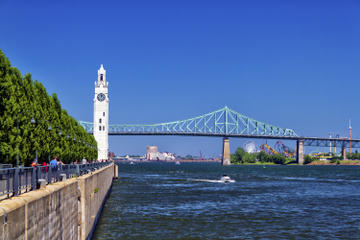St Lawrence River
TIME : 2016/2/22 10:04:51

St Lawrence River
As one of the longest and most historic rivers in the world – penetrating 3,058 kilometers into North America- the St Lawrence River is omnipresent everywhere visitors look. Stretching from the mighty Atlantic Ocean to the Great Lakes of Ontario, the land on either side of it has been occupied by Native tribes for almost 10,000 years. And although many studies suggest Vikings were the first European explorers to navigate its waters, the river was only officially discovered by Jacques Cartier in the 16th century – which turned out to be one of the most important turning points in North American history. Indeed, the Saint Lawrence River served as the main route for European exploration of the North American interior in order to establish a lucrative colonial empire resulting from the trade with the Montagnais, the Etchemin and the Algonquin people.
The St Lawrence’s limpid waters are home to a fragile yet impressive ecosystem, which includes a great deal of whales: beluga, sperm, fin, blue, bottlenose and Northern Atlantic right whales to name a few. Local fishes include smelt, sturgeon and herring. Massive flocks of migratory birds use the St Lawrence’s sandbanks as seasonal stops, including most of the world's greater snow geese, which nest on the tidal marshes at Cap-Tourmente east of Québec City. Practical Info
Experiencing the St Lawrence River is both incredibly easy and difficult; its omnipresence make it impossible to miss but its sheer size means that only visitors with ample time on their hands can fully enjoy it. It can be enjoyed while driving between Montreal and Quebec City on either the 138 (nicknamed the King’s Route) or the 132. And locals from Quebec City will argue that the best viewpoint of the river is located high up on the Plains of Abraham – after all, Quebec City’s Iroquois name means “where the river narrows.” A splendid panorama for river enthusiasts!
